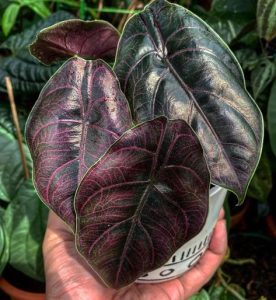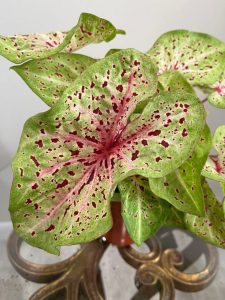- English
- Chinese
- French
- German
- Portuguese
- Spanish
- Russian
- Japanese
- Korean
- Arabic
- Irish
- Greek
- Turkish
- Italian
- Danish
- Romanian
- Indonesian
- Czech
- Afrikaans
- Swedish
- Polish
- Basque
- Catalan
- Esperanto
- Hindi
- Lao
- Albanian
- Amharic
- Armenian
- Azerbaijani
- Belarusian
- Bengali
- Bosnian
- Bulgarian
- Cebuano
- Chichewa
- Corsican
- Croatian
- Dutch
- Estonian
- Filipino
- Finnish
- Frisian
- Galician
- Georgian
- Gujarati
- Haitian
- Hausa
- Hawaiian
- Hebrew
- Hmong
- Hungarian
- Icelandic
- Javanese
- Kannada
- Kazakh
- Khmer
- Kurdish
- Kyrgyz
- Latin
- Latvian
- Lithuanian
- Luxembou..
- Macedonian
- Malagasy
- Malay
- Malayalam
- Maltese
- Maori
- Marathi
- Mongolian
- Burmese
- Nepali
- Norwegian
- Pashto
- Persian
- Punjabi
- Serbian
- Sesotho
- Sinhala
- Slovak
- Slovenian
- Somali
- Samoan
- Scots Gaelic
- Shona
- Sindhi
- Sundanese
- Swahili
- Tajik
- Tamil
- Telugu
- Thai
- Ukrainian
- Urdu
- Uzbek
- Vietnamese
- Welsh
- Xhosa
- Yiddish
- Yoruba
- Zulu
- Kinyarwanda
- Tatar
- Oriya
- Turkmen
- Uyghur

A na-ewu ewu maka ụdị ya mara mma na nnabata ndo dị elu, Chlorophytum-Also na-akpọ creed orchid na ahịhịa ndụ - bụ ahịhịa ornamental. Nke kachasị dị ka osisi ime ụlọ, chlorophytum na-eme nke ọma ma nwee ike ịdị ndụ n'ọtụtụ ọnọdụ gburugburu ebe obibi. N'agbanyeghị nke ahụ, mmepe nke chlorophytum na-adabere na ọnọdụ ọkụ.

Chlorophytum
Chlorophytum’s light needs and growing patterns Native to South Africa is Chlorophytum. Of the Liliaceae family, this is a perennial evergreen plant. It may flourish in gloomy, semi-shaded, or sunny surroundings and is quite flexible. Nevertheless, the growth performance of Chlorophytum will vary under various light situations; this is mostly represented in the color of the leaves, the growth pace of the plant, and the blooming state.
Low light surroundings Strong shadow tolerance of Chlorophytum makes it a perfect indoor plant. Chlorophytum is appropriate for putting in areas with low light, including north-facing rooms or away from windows, even under low light settings because it can still maintain a decent development state. On the other hand, if it is in a low light environment for a long period, Chlorophytum’s leaf color may become duller and the leaf development rate will also slow down. Furthermore, spider plants are not simple to bloom in low light conditions; even when they do, the blooms are somewhat few.
Ọkpụkpụ gburugburu
The most often used growing environment for spider plants in homes and offices is medium light, which also is their optimal condition. Usually referring to diffuse light or strong indirect light, medium light may be obtained by orienting windowsills east- or west-facing or by positioning windows close but apart from direct sunshine. Under such light, spider plants grow quicker, are more likely to blossom, and have brighter leaves. Spider plants’ branches will become denser, and the plant will seem generally more lively and healthier.
Ebe a na-egosi gburugburu
Ọ bụ ezie na udu mmiri nwere ụfọdụ nnabata ọkụ, oke anwụ gabiga ókè nwere ike igbochi mmepe ha. N'okpuru ìhè nke ukwuu, udu mmiri osisi na-adị mfe ma ọ bụ aja aja na-adị mfe na ọbụna akwukwo nri na-asacha. Ọtụtụ mgbe na-ezo aka na mpaghara ndịda-na-eche ihu, karịsịa na nzuzo na-eche ihu n'oge ọkọchị, ebe dị elu na-etinye na windo ndị ahụ na windo kwesịrị inye aka gbochie nke a.
Oge mgbanwe na mkpa
Oge ahụ ga-emetụta ihe achọrọ maka ọkụ osisi. Mụta ntuziaka a ga - eme ka ọnọdụ nduru nwee ọnọdụ dị mma karịa ọtụtụ oge, yabụ na-enye obi ụtọ mmepe ha.
Oge ọkọchị na ọdịda
Oge kachasị mma maka mmepe nke ududo bụ mmiri wee daa; N'ihi ya, ọnọdụ ọkụ dị oke mkpa maka ha. Ike ọkụ dị nro na nke ọma na-eme ka ha zuo oke maka mmepe nke ududo. Ekwesịrị idobe ahịhịa osisi na gburugburu ebe obibi na-acha uhie uhie na-ezuru oke ọkụ n'oge a. Ọ bụrụ na ọ ga - ekwe omume, ụtụtụ ma ọ bụ nke ehihie ma ọ bụ nke ehihie ga-enyere aka zụlite ahịhịa ndụ ma na-egosipụta akwụkwọ ha, yabụ na-ewusi ha ike.
Nke okpomọkụ
Anyanwụ anwụ na-adịwanye njọ, ọkachasị gburugburu etiti ehihie, yana ìhè anyanwụ nwere ike imerụ udu mmiri. Useding sudeside osisi n'oge ọkọchị kwesịrị na-enyerekwukwu nlekọta iji gbochie ìhè anyanwụ. Ọ bụrụ na a na-edebe osisi ududo ahụ n'èzí, ọ bụ ihe amamihe dị na ịkwaga ya na mpaghara dị mma, dị ka n'okpuru osisi ma ọ bụ n'okpuru parosol. Ọ bụrụ na a na-edobe osisi ududo n'ime, a na-adụ ya ọdụ ka ọ dị na windo ma ọ bụ jiri ákwà mgbochi gbochie ya ìhè anyanwụ.
Ida ada
Light kwesịrị ọkụ nke osisi udu mmiri na-agbanwe na ìhè anyanwụ na oge oyi na obere anwụ na-acha. Iji gbatị ọkụ oge na ume, osisi ududo nwere ike ịnọ nso na windo ma ọ bụ na ndịda ihu na ndịda na ndịda n'oge a. Sunshine showshine nwere ike inyere mkpụrụ osisi ududo anya na-enwe ọnọdụ na-eto eto ma gbochie na-acha odo odo nke ahịhịa ma ọ bụ jiri ọkụ na-ekpo ọkụ na-ekpo ọkụ.
Ọkụ na ahịhịa nke osisi ududo
One may determine if the light of the spider plant is suitable by considering the change of color of its leaves. The leaves of a spider plant may seem brilliant green under appropriate light circumstances; other types have milky white or light yellow marks on the leaf margins. But the color of the spider plant’s leaves will also alter with changing light conditions:
Ọ bụghị ọkụ zuru oke
The leaf color of the spider plant could becoming dull, less green, or even yellow under low light. The single green hue of the leaves’ marks will likewise progressively vanish. This kind of circumstance usually arises in darkly lit spider plants that have spent a lot of time in such conditions. Appropriate light increase may help to solve this issue.
Oke ọkụ
O yikarịrị ka ọkụ osisi na-agba ọkụ na ọkụ na-enwu gbaa, nke na-egosi ka nkụ, na-acha odo odo ma ọ bụ browging nke epupụta. Anyanwụ dara nke ukwuu nwere ike ibibi chlorophyll na akwụkwọ, yabụ belata mma ha. Na-ebugharị ahịhịa na-eto eto ruo ebe dị nro ga-enyere aka gbochie ìhè anyanwụ.
ọgwụgwọ maka ọkụ na-ezughị ezu
Enwere ike ịme usoro ụfọdụ iji bulie ìhè osisi ududo n'akụkụ nke nwere obere ọkụ site na ya na-agba ezigbo mmepe ya.
Ntụziaka ọkụ dị ọkụ
Enwere ike iji ọkụ na-eme ka ọ bụrụ ihe na-eme ka ọkụ dị n'ime ụlọ dị n'ime ụlọ na-acha uhie uhie ma ọ bụ n'oge obere oge oyi n'oge oyi. Ngwa ọkụ ndị ọzọ na-ejikọ ndị na-agụnye ahịhịa ọkụ ọkụ na fluorescent bulbs. Nyere oke ọkụ nke ọkụ eke, a na-adụ ya ọdụ ka ọ nye osisi udu mmiri 8 ruo 12 nke ìhè kwa ụbọchị. Mgbe ị na-eme ka a na-eme ọkụ, jide n'aka na ịnọgide na-elegide anya oriọna kewapụ oriọna ahụ site na ihe ọkụkụ iji gbochie oke ọkụ na-akpata.
Imeghari ndokwa.
Bugharịa osisi ndị na-akụ mmiri ọkụ na ntụpọ karịa na ihu igwe, ikekwe n'akụkụ windo ma ọ bụ na mbara ihu ebe ọ nwere ike ịgbasa ọkụ. Bugharịa osisi na nchebara echiche maka idozi gburugburu gburugburu gburugburu ebe obibi ọhụrụ iji gbochie nzaghachi nrụgide site na mgbanwe mberede na-agbanwe.
Kwachaa ya
The growth rate of the spider plant could slow down and the leaves might becoming thin or drooping under low light. Good pruning helps the plant to remain generally beautiful and stimulates the development of fresh leaves. Pruning concurrently improves photosynthesis’s efficiency and lessens the demand for light on the leaves.

Chlorophytum amanise Fish Flash
Oseihe nwaanyi udi osisi bụ osisi eji achọ mma nke nwere ezigbo ọkụ chọrọ nke dabara na ụdị gburugburu ebe obibi. Ma, arụmọrụ uto nke osisi nwere ike imetụta ọnọdụ ọkụ. Ike ọkụ dị iche iche ga-emetụta ahịhịa agba, na-akụ ya, na ududo ududo na-ala ala na-ala ala na-adịghị ala karịa ka ọnọdụ ọkụ dị elu. Ya mere, isi ihe na-ekwe nkwa mmepe mmepe nke ndulite bụ ihe omuma na ikike nke mkpa ọkụ ha na mmegharị dabara adaba dabere na ọnọdụ ma ọ bụ ụlọ obibi. Site na nchịkwa ọkụ, ụdị ndudo nwere ike ọ bụghị naanị ịghọ nnukwu akụrụngwa nke ịchọ mma gburugburu ebe obibi mana na-enyekwa oke na gburugburu ime ime.



